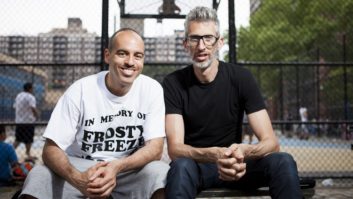Engineers at the National Association of Broadcasters are reminding stations that the “white space” issue is of concern not only for TV but also for wireless mic users in radio. There’s a database registration process you need to know about.
In its Radio TechCheck newsletter, NAB pointed out that the Federal Communications Commission is finalizing a rulemaking to allow unlicensed devices to operate on vacant TV channels or “white spaces.”
“Yet those vacant TV channels are not always totally vacant,” the staff wrote. “In fact, those frequencies are used by Part 74 low-power auxiliary operations, such as wireless microphones, IFBs and other systems used in news and program production by both TV and radio stations.”
NAB said such systems are entitled to interference protection from white space devices, but it encouraged broadcasters to take action to ensure that licensed operations are protected.
“While no white space devices or databases have received final approval yet, it’s not too soon for TV and radio stations to start the process of gathering information about how and where they use wireless microphones and other low-power auxiliary operations,” the newsletter advised.
“Stations should also inventory their wireless microphones and ensure that they are licensed and are operating only on frequencies between 54 MHz and 698 MHz (TV Channels 2 to 51). In a separate action, the FCC required that all low-power auxiliary operations in the 700 MHz band (TV Channels 52 to 69) cease operation no later than June 12, 2010.”
The article explained that the FCC, in allowing unlicensed white space devices, appointed nine organizations as “TV Bands Device Database Administrators” to identify vacant channels. The administrators include Google and Comsearch; Microsoft has applied too.
Users of licensed low-power auxiliary stations at “well-defined times and locations” can register in the database for protection; these registrations are good for a year and must be renewed. Users of licensed wireless mics can register with any of the database administrators.
NAB said it is working with the FCC and database administrators to make the wireless mic registration process “as simple and as quick as possible, such as allowing the simple registration of a large geographic area (for example, a stadium or golf course), and encouraging the database operators to update the database more frequently than every 24 hours (as required by the FCC rules), in order to provide protection for unplanned or breaking news events.”
More info:
FCC White Space page











